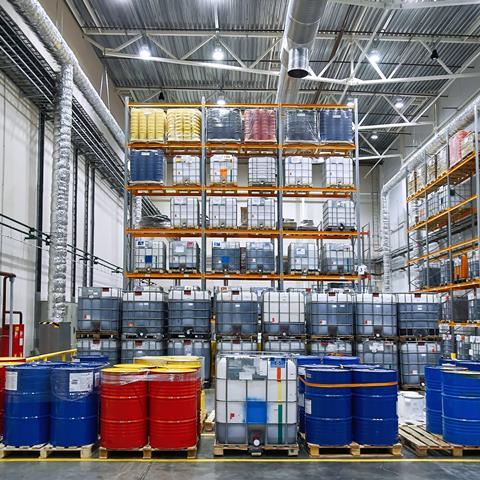This is simple in terms of concept, as chemicals considered to be essential to society would be regulated for use whereas those deemed to be non-essential would no longer be allowed for use or require further assessment to inform a decision. How to do this in practice though is not straightforward and may not bring the expected benefits of simplification. Moreover, the essential use concept could lead to unjustified bans of such large families of chemicals, and/or restrictions on uses that may be considered non-essential but that currently do not pose an unacceptable risk or are an alternative to existing chemicals of concern where a more sustainable solution currently does not exist.
The essential use concept is often linked back to the Montreal Protocol for Ozone Depleting Substances where it was introduced to aid the phase out process because it was not possible to rapidly phase-out all uses. Under the Protocol the use of a controlled substance (chemical) is deemed to be essential if it is “necessary for the health, safety or is critical for the functioning of society (encompassing cultural and intellectual aspects); and there are no available technically and economically feasible alternatives or substitutes that are acceptable from the standpoint of environment and health”.
Current status
The UK is considering whether the essential use concept could be applied to facilitate the management of PFAS chemicals; in April 2021 Defra hosted a stakeholder workshop to explore this and under the Chemicals Stakeholder Forum, a working group has been tasked to look at the concept.
In the EU, the European Commission’s Chemicals Strategy for Sustainability (published October 2020) states as an action to ban “…the most harmful chemicals in consumer products – allowing their use only where essential”.
Discussions between the Commission and Member States on how this could be implemented under the main horizontal chemical legislation REACH (Registration, Evaluation, Authorisation and Restriction of Chemicals) to improve the regulatory process are taking place through the Competent Authority for REACH and Classification and Labelling (CARACAL) group. At the global level, the Organization for Economic Co-operation and Development (OECD) has launched a working group.
At the global level, the Organization for Economic Co-operation and Development (OECD) has launched a working group.
Our opinion and actions
- The Chemical Industries Association (CIA) recognises the lengthy time that it has taken to arrive at some regulatory decisions under EU REACH. We appreciate the reasoning behind why authorities are thus considering whether the regulatory process can be made more efficient through possibly introducing the essential use concept when looking at large groups of chemicals e.g. PFAS.
- We concur with the European Commission’s paper to CARACAL in November 2020 that points out that some aspects of essential use are already incorporated in the EU-REACH legislation (same for UK REACH). This enables authorisations to be granted for the continued use of Substances of Very High Concern (SVHC) when viable alternatives are not available and where the socio-economic benefits of the use outweigh the risk from the use.
- Multiple approaches on how the concept could be applied have been put forward by stakeholders and we hence call for careful evaluation of this concept. It is crucial to avoid the exclusion of chemicals in certain applications without robust scientific assessment, as this would potentially lead to the unjustified phase-out of chemicals which do not pose a risk. As such, it should be strongly linked to scientific assessment and only implemented where an unacceptable risk is identified or where adequate control cannot be guaranteed.
- Caution is also needed when considering the concept since some uses of chemicals that are deemed to be non-essential today, may have a considerably higher priority in the future thereby running the risk of stifling innovation. A good example of this over recent decades is the advances society has made in technology – chemicals have and continue to make this possible. Furthermore, in times of an emergency, a chemical previously considered as being non-essential may become essential, so flexibility is therefore important.
- The challenge in applying the concept lies with how to define essential use and who decides whether a chemical use is essential. Essential use assessments may differ widely taking account of personal, societal (there may also be geographical differences), regulatory, or governmental perspectives. One way to help address this challenge could be to introduce an essential use assessment as a complement to the regulatory process as has been suggested by some stakeholders, an example being the European Chemical Industry Council’s thoughts on introducing this into the EU-REACH regulatory process.
- • In whichever way the essential use concept is applied, it would require decisions to be made by an official body of some nature and inadvertently, its incorporation into the existing regulatory process could even lengthen the overall time it takes in reaching a regulatory decision due to the complexity of such assessment.
Conclusion
As a stand-alone concept, essential use sounds promising as a potential regulatory tool for streamlining and making chemical legislation more efficient. Whilst it is ideally suited to the Montreal Protocol, its suitability for use in all chemical legislation needs careful consideration in terms of identifying and assessing both direct and indirect implications for any option being explored. To inform this debate, CIA encourages UK authorities to fully engage with stakeholders to ensure that any policy proposal put forward is both workable and not discriminatory, as well as being scientifically justified and informed by risk-based evidence.





















